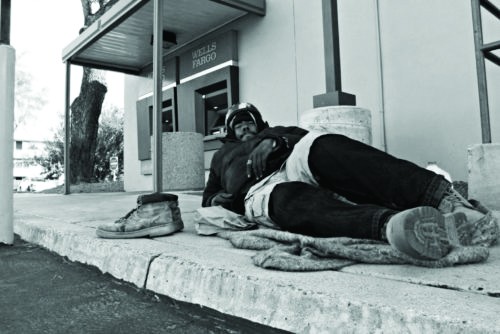Improved assistance, access to permanent housing and a robust economy brought counteless homeless in out of the dark over the last decade.
However, over a half a million people still experience some level of homelessness across the nation.
New initiatives, programs and organizations played a pivotal role in getting people off the street and back on their feet in Tucson and Pima County.
The National Alliance to End Homelessness (NAEH) reported 36 states saw decreases in their homeless population since the Great Recession in 2008 — Arizona being one of them.
According to Tucson Pima Collaboration to End Homelessness (TPCH), Pima County is experiencing its lowest homeless population since 2012.
As of January, TPCH reported 363 people sleeping outside or in uninhabitable places and 1,017 sleeping in shelters and transitional homes.
On any given night in the United States, more than 190,000 homeless people are unsheltered and 360,000 are sheltered, according to NAEH.
Poor mental health, economic hardship, domestic violence and drug addiction can cause homelessness, according to NAEH.
TPCH reported that 55 percent of Tucson’s homeless population suffer from mental illness. A majority of homeless women are victims of domestic violence, as well.
RELATED: “Street medicine” class teaches students how to treat the homeless
“A large portion of homelessness is caused by mental illness,” said Art Gage, former chairman of TPCH. “Twice a year we put on an event at a local church, and you’ll see in at least 45 percent of homeless individuals that there is cognitively something missing. It makes it hard for them to focus and improve their life.”
TPCH’s goal is to discover the issues in the homeless community and then find money to support programs and organizations to aid those issues, said Gage.
“Last year we received $8.5 million in grants from [the U.S. Department of Housing and Urban Development],” Gage said. “We gather data and rank the different homeless organizations to see how efficient they are working and what services they offer, then we set them up with HUD.”
Gage said HUD typically emphasizes certain issues that are afflicting the homeless community. Currently, he said, they have a specialized grant for domestic-violence and youth homelessness.
“The most successful way to help the homeless [is] when there are low barriers to housing and immediate access to services in the community like mental health, detox and training to get a job,” Gage said.
In Tucson, a handful of programs and organizations assist the area’s 1,380 homeless, ranging from the City of Tucson to non-profits and churches.
A leading example is the CREATE program, operated through Sister Jose Women’s Center, 1050 S. Park Ave.
Of the 1,380 homeless people in Pima County, about 450 are women.
The 26-week program empowers homeless women, helping them regain personal identity and teaching them job and social skills.
“The women in my program are women who are for the most part in their 40s, 50s and early 60s,” said Penny Buckley, the CREATE program director. “This is a special group of women who have been chronically homeless and have come to the point in their lives where they realize that it’s do or die.”
RELATED: ROTC collecting boots for homeless veterans
Buckley said 80 percent of the women are victims of domestic violence and nearly 75 percent suffer from mental illness. Surprisingly, she said the number of women dealing with drug abuse is low.
“Success [in the program] can be best described by women moving forward in their lives by accomplishing goals that were once inconceivable for that woman,” Buckley said.
Each session of the program starts with eight to ten women, but not everyone finishes.
“The women who start are not necessarily going to finish the 26-week program,” Buckley said. “That’s perhaps beyond their capability … Even if they showed up for a month and went through that daily routine and learned some new things, that’s a forward step.”
The program consists of one-on-one coaching and classes, from writing and art to anger management and communication skills. Women learn to write resumes, manage money and use computers. They partake in community service around the center and in Tucson.
Buckley said a few graduates of the program have found above minimum-wage work due to their acquired skill set.
Buckley said she’d like to expand the program. She sees a similar program for men, but it’d be slightly different. She said women are more tuned to work in a community environment, while men are more individualistic. She believes some of the same coursework for women would overlap and prove beneficial.
“Our ultimate goal is to make this a replicable model,” Buckley said.
Follow the Daily Wildcat on Twitter









